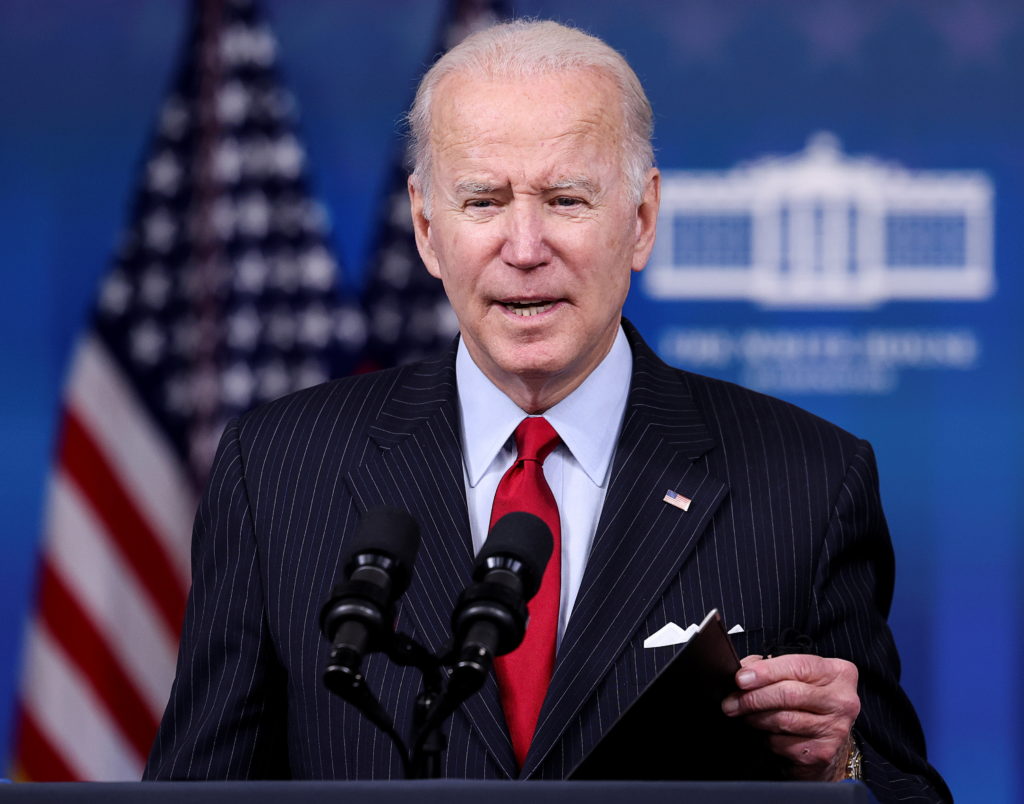The United States announced a record-sized release of emergency crude oil reserves in March without consulting partners in the International Energy Agency, leaving them scrambling to match with releases of their own, according to two sources familiar with the matter.

Unilateral action by Washington to address global supply or price issues risks undermining the U.S. relationship with the IEA, the world’s energy watchdog that normally oversees international releases from emergency stockpiles, and could raise questions about the continued relevance of the group.
The Paris-based IEA, which groups together 31 mostly industrialized countries, was established after the 1973 oil price shock to ensure continuous energy supplies to its members in the event of an embargo, war, or devastating storm.
The group’s members have become worried that U.S. President Joe Biden is using the Strategic Petroleum Reserve (SPR) to tamp down rampant domestic inflation for political reasons, instead of protecting consumer countries from a global supply disruption, according to the sources who declined to be identified because of the sensitivity of the topic.
“The IEA was embarrassed by the (U.S.) release which was at the start done essentially unilaterally by the U.S.,” said a source familiar with the diplomacy around the release.
“It is the common understanding of IEA members that we must cooperate as a whole,” said another source, this one from an IEA member country, who said the U.S. announcement came as a surprise.
The IEA told Reuters it had been in close contact with all member countries including the United States in the run-up to its two stock release announcements this year: “This consultation as well as the decisions for taking collective action were conducted in line with IEA procedures.”
The U.S. Department of Energy said the United States had been in “frequent contact” with the IEA and its member states on energy security leading up the announcement, but confirmed its decision to release the oil was “independent” of the IEA.
It did not comment on whether the United States shared in advance the timing and volume of its release.
“The United States and other IEA members countries can and have, independently, released oil from their strategic reserves separate from any IEA collective action,” the department said in a statement to Reuters.
The White House did not immediately respond to a Reuters request for comment.
STRANGE OPTICS
At issue is the U.S. announcement on March 31 that it would unleash 180 million barrels from the SPR at a pace of 1 million barrels per day to bring down soaring global energy prices and address cuts in Russian oil supplies since its invasion of Ukraine in February.
The sources told Reuters that Washington had not informed the IEA or its members that the announcement was coming – a break with past precedent – and that the record-sized volume, over three times bigger than any previous release from the SPR, was a surprise.
The U.S. announcement came one day before members of the IEA were due to meet to discuss a coordinated release. Following the meeting, which was chaired by U.S Energy Secretary Jennifer Granholm, the IEA announced a coordinated release had been agreed but gave no detail on volumes.
At that point, the IEA’s leadership began bilateral meetings with other members to cobble together contributions, according to the two sources. After a week of diplomacy, it secured commitments from its non-U.S. members to unleash another 60 million barrels combined.
That 60 million-barrel figure was relatively small, however. Per the IEA’s rules, a member country’s contribution to a coordinated emergency release should roughly match the proportion of its oil consumption within the group.
With the United States accounting for about half of consumption among members, the IEA contribution should have roughly matched the U.S. draw.
“That wasn’t doable,” the source familiar with the diplomacy said. “It was impossible as no one had such stocks.”
“The optics of the release being done 75% in the U.S. and 25% in the rest of the world are simply strange,” the source added.
The IEA’s announcement glossed over the mismatch, detailing a 120 million-barrel release, with 60 million of that coming from the United States in the first two months – effectively ignoring the fact the U.S. aimed to keep the oil flowing for an additional four months.
The Biden administration’s release marked the second time in six months that it had signed off on a big drawdown from the SPR without the IEA’s blessing.
In November, the United States pledged a release of 50 million barrels to tame prices rising due to a sudden rebound in demand from the darkest days of the COVID-19 pandemic.
While some IEA members like South Korea, Britain and Japan made contributions to that release, the agency itself sat out because it saw no major supply disruption to address at the time.
After Russia’s invasion, however, IEA member countries saw fit to organize a coordinated release. On March 1, they announced a release of 60 million barrels – half from the United States – to counter likely disruptions to supplies from Russia, a leading global oil and gas producer.
DOMESTIC CRITICISM
Biden’s Republican opponents have slammed him for his move to release the 180 million barrels from U.S. stockpiles, arguing that the decision was political and that he should be encouraging domestic oil production instead.
Record-high prices for gasoline in the United States are seen as a top vulnerability to Biden’s Democratic party leading into mid-term elections in November.
Biden ran on a promise to phase out fossil fuels to help fight climate change, but his administration has not successfully imposed any curbs on the industry and has in recent months urged drillers to speed up production to bring down prices.



